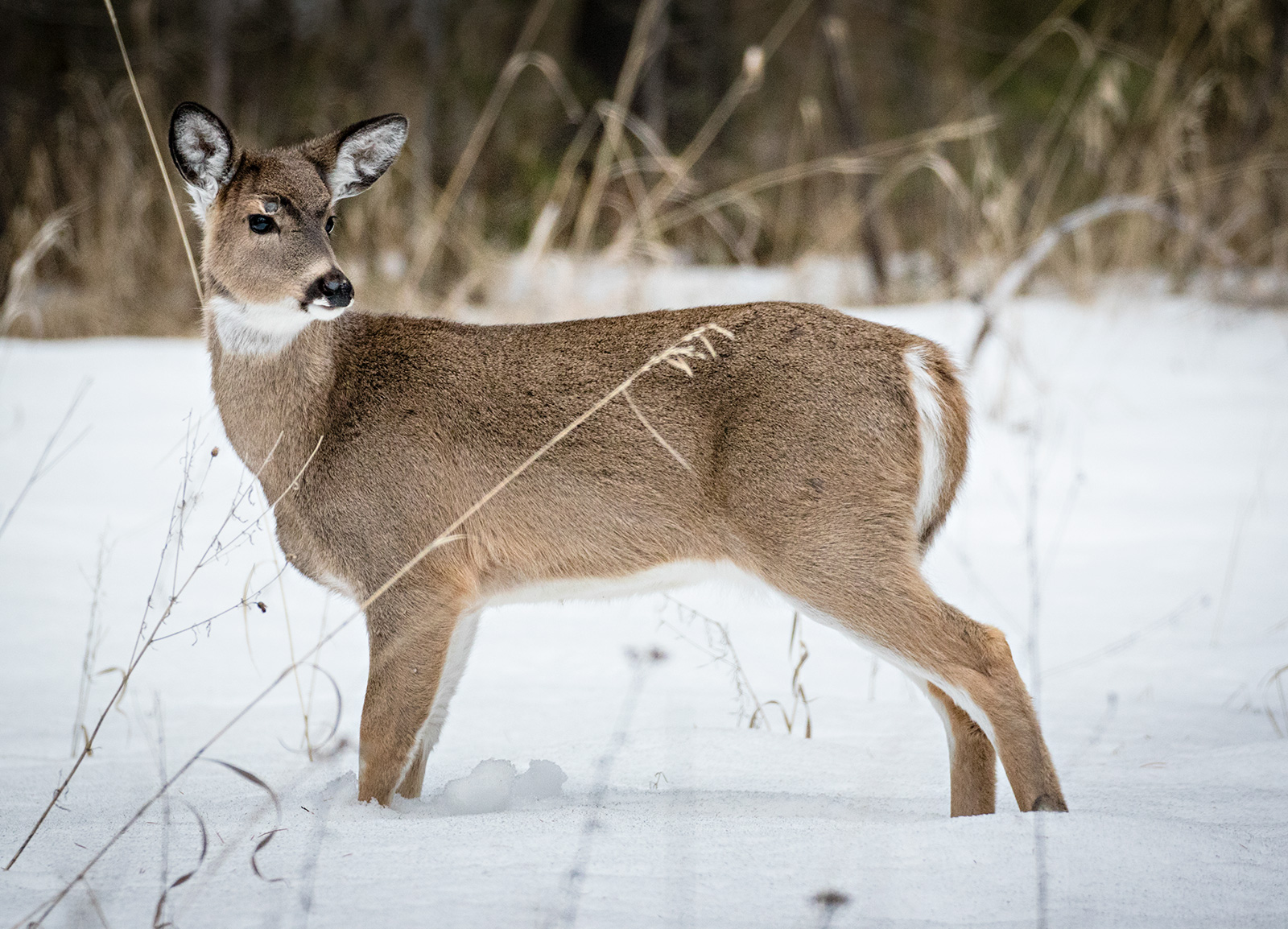After six weeks in the field, Montana’s general big game hunting season ended Nov. 26 with hunters harvesting slightly fewer deer and elk than in previous years in northwest Montana, according to preliminary tallies released Friday by Montana Fish, Wildlife and Parks (FWP).
Wildlife managers said the check station figures are a mere approximation of the total amount of game harvested this season and stressed that harvest surveys will provide a clearer picture when they’re completed in the late spring; however, the preliminary numbers are on par with spring fawn-recruitment surveys, which were “highly variable” across the region this year.
“This is pretty close to what we predicted based on our fawn recruitment counts,” said Neil Anderson, FWP’s regional wildlife manager in northwest Montana’s Region 1. “So, it wasn’t a surprise, although the mild weather we’ve had didn’t help things, either. Hunting for species like elk just becomes that much more difficult and probably did affect the success rate.”
Deer populations, especially white-tailed deer, are particularly responsive to winter severity, Anderson said. Although last winter’s overall snowpack was thin compared to the previous two years, the season saw sustained periods of bitter cold that likely affected recruitment.
“The winters of ’21 and ’22 were pretty mild and we had decent recruitment. Last year wasn’t that harsh, but recruitment was highly variable. Some regions were really low, like the Swan,” Anderson said. “One bad year doesn’t really make or break a population, but if multiple years of poor recruitment we might see bigger dips in the population.”
Some hunters reported encountering challenging conditions in the field as an early-season covering of snow hardened in the cold, dry weather, turning brittle and crunching audibly underfoot, which compromised hunters’ ability to stealthily track deer and elk, Anderson said.
“We did hear from hunters who said the snow got pretty noisy,” Anderson said, noting that, typically, having snow on the ground is a boon to hunters who rely on it to track ungulates. “In this case, it probably hindered more than it helped them.”
According to FWP, approximately 10,015 hunters appeared at four northwest Montana game check stations since the general deer and elk hunting season began on Oct. 21, signaling a slightly higher turnout than last year, when 9,239 hunters were tallied. Hunters reported harvesting 761 white-tailed deer, including 567 bucks, and 97 mule deer. That’s compared to 765 white-tailed deer in 2022, including 558 bucks, as well as 69 mule deer. This year’s percentage of hunters with game was 9%, compared to 9.7% last year.
The regional check stations, which were only open on weekends and didn’t capture weekday harvests, were located at the following locations: U.S. Highway 2 west of Kalispell; Montana Highway 83 north of Swan Lake; Highway 200 west of Thompson Falls; and on U.S. Highway 93 near Olney.
The busiest check station was on U.S. Highway 2, where 4,878 hunters checked 346 white-tailed deer, including 268 white-tailed bucks, as well as 44 mule deer for an 8.4% success rate. That’s compared to 4,296 hunters in 2022 with 333 white-tailed deer, including 237 white-tailed bucks, as well as 29 mule deer.
Looking ahead, the Montana Fish and Wildlife Commission will vote to adopt hunting regulations for the 2024/25 season during its Dec. 14 meeting, which will include an additional opportunity for the public to comment. The deadline for the public to submit written comment was on Nov. 21.
Every other year, FWP considers broad changes to hunting regulations through a process that includes public scoping and comments. Ultimately, the Fish and Wildlife Commission adopts most hunting seasons for two-year intervals. This season-setting process looks at all aspects of hunting regulations, including season structure, regulations and hunting district boundaries.
For more information on the proposed regulations, go to fwp.mt.gov/aboutfwp/commission/december-2023-meeting
Muzzleloader Heritage Hunting Season
During the muzzleloader heritage season, a person may take a deer or elk with any unused license or permit that is valid on the last day of the general hunting season.
Hunters can use plain lead projectiles and a muzzleloading rifle that is charged with loose black powder, loose pyrodex, or an equivalent loose black powder substitute. The charge is ignited by a flintlock, wheel lock, matchlock or percussion mechanism using a percussion or musket cap.
The muzzleloading rifle must be a minimum of .45 caliber and may not have more than two barrels.

